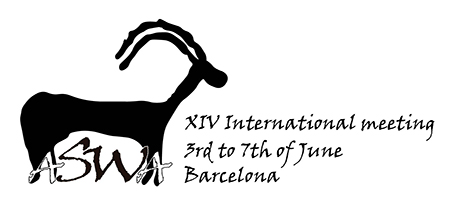The paleoenvironmental context of the Neanderthal occupation at Kabazi II (Crimea) (ca. 40 to 30 ka BP) is investigated through tooth microwear analysis to infer the diet of ungulates at the time of death. This proxy provides evidences about (1) the habitat where the ungulates were hunted but also can inform about (2) the duration of the events of occupation in each archaeological level.
In this work, we have analysed the microwear pattern of 75 specimens of Equus hydruntinus belonging to the main archaeological levels of the site (levels 1, 2, 3, 4, 5, 7, 8, 8c, 8d, 9, 13, 13a).
(1) The tooth microwear pattern observed on the wild asses from Kabazi II is characterized by a high number of scratches and relatively low number of pits related to a highly abrasive diet based on grasses (which are rich in phytoliths). The bivariate distribution of the numbers of pits and scratches compared to extant species, places all the fossil samples from all levels in the grazing and grass-dominated mixed feeding ecospace.
(2) The duration of the events of occupation can be estimated using the variability of the microwear signal. By means of a Bayesian model established on modern ungulates, it is possible to distinguish seasonal events vs. long-term occupations in archaeological assemblages. The wild ass population of Kabazi II plot in area that indicating a short duration event for the accumulation corresponding to one season or less in all levels. Moreover, these occupations occurred at the same season in each of these levels.
These results fit in with the other archaeozoological interpretation which support that Kabazi II served as a kill and butchery site throughout its occupational history (short-term occupations) at which Neanderthals practiced the specialized hunting of E. hydruntinus.

 PDF version
PDF version
